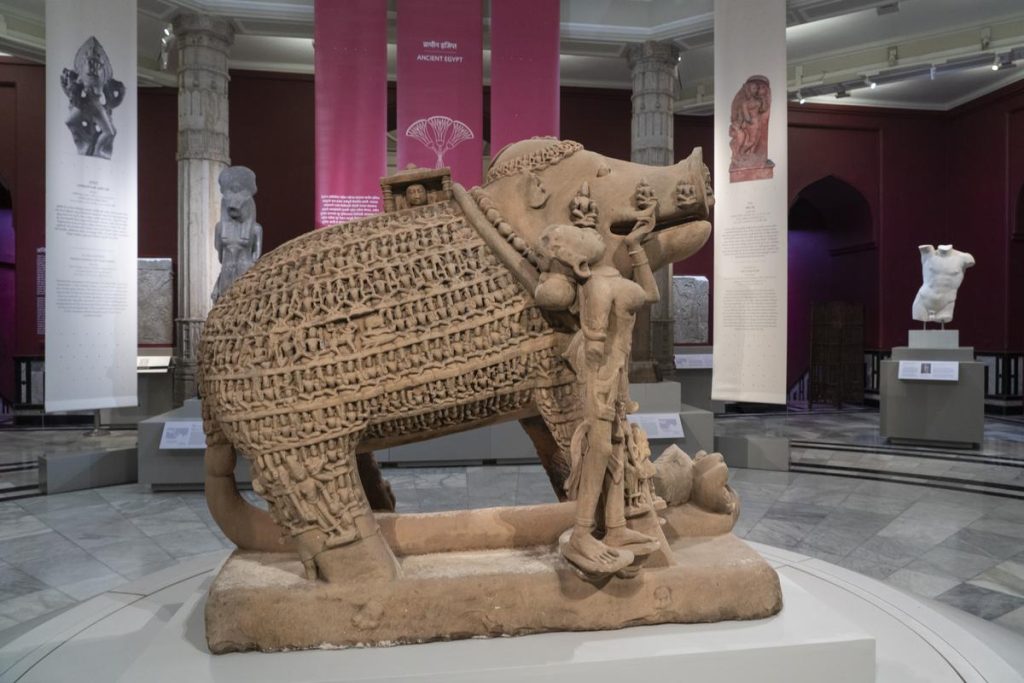A Historical Odyssey in Mumbai’s CSMVS
Mumbai’s Chhatrapati Shivaji Maharaj Vastu Sangrahalaya (CSMVS) is currently hosting an extraordinary exhibition, “Ancient Sculptures: India, Egypt, Assyria, Greece, Rome,” transforming its rotunda into a portal through time. This curated assemblage brings together artefacts from diverse cultures, shedding light on the interconnectedness of the ancient world.
Artistic Collaboration and Global Curation
Under the leadership of CSMVS Director General Sabyasachi Mukherjee, the exhibition is a testament to global collaboration in the world of art. Partnering with institutions like Getty, The British Museum, and Staatliche Museen zu Berlin, CSMVS showcases its collection alongside borrowed pieces. This exhibition follows the success of the museum’s previous endeavour, “India and the World: A History in Nine Stories” (2017-18).
Educational Mandate and Aesthetic Exploration
More than just a display of ancient artefacts, the exhibition serves CSMVS’ commitment to art education, allocating over 60% of its annual budget to this cause. Through this immersive experience, visitors explore the aesthetics of ancient sculptures from India, Egypt, Assyria, Greece, and Rome. The juxtaposition of these diverse works provides a unique lens for reinterpreting ancient art history from an Indian perspective.
Highlights of the Exhibition: The Lotus Medallion and Dionysos
A standout piece in the exhibition is the 2nd century CE limestone Lotus Medallion from Amaravati, symbolizing purity across cultures. Adjacent to it, a resplendent white marble full-figured Dionysos (Bacchus) from 100-199 CE, on loan from the British Museum, captures the essence of Greco-Roman art. The exhibition features an array of sculptures, including busts of Zeus, Apollo, Triton, and stone panels from Assyria, creating a tapestry of artistic expression.
The Aesthetics of Different Worlds: India and Europe
The exhibition prompts viewers to ponder the differing approaches of sculptors in ancient India and Europe. For instance, the torso of Apollo, representing the Greek ideal of beauty shaped by exercise, stands in contrast to the austere, serene body of the Dvarapala Yaksha, a 2nd century BCE Jain representation from Aurangabad, Maharashtra.
Four Years in the Making: A Curatorial Triumph
Initiated almost four years ago, the exhibition is a result of meticulous planning and collaboration. With a focus on exploring themes of nature, divine form, and beauty, the display aims to unravel the interconnectedness of ancient cultures. The collaboration is set to culminate in 2025 with the opening of an ancient world gallery at CSMVS.
Water as a Unifying Element: Insights into Ancient Cultures
As visitors traverse the exhibition, the role of water emerges as a common thread in ancient cultures. An Egyptian sculpture of Hapy, the god of the Nile’s annual flooding, stands alongside a digital image of the Ganga. The juxtaposition highlights the significance of water in shaping civilisations across Egypt and India.
Empowering Young Minds: Art Education in Focus
Sabyasachi Mukherjee envisions the exhibition as a means to re-energise curiosity about the ancient world, especially among young Indians. The collaborative effort ensures that the choice of objects resonates with an Indian audience, fostering a sense of global citizenship and historical awareness.
A Dialogical Encounter with History
In the wake of virtual museum tours, the exhibition at CSMVS underscores the irreplaceable power of a direct encounter with great works of art. As visitors engage in a dialogical exploration of these ancient sculptures, they are not merely spectators but active participants in history. The exhibition transcends temporal and geographical boundaries, inviting young Indians to connect with their artistic traditions and embrace their place in the grand narrative of humanity.
Feature image: Red sandstone sculpture of Yajna Varaha (900-1099 CE), boar incarnation of Vishnu, from Madhya Pradesh. | Photo Credit: Vidisha District Archaeological Museum, Madhya Pradesh
Manhattan District Attorney Returns Stolen Antiquities Valued at Over $1 Million to Nepal





